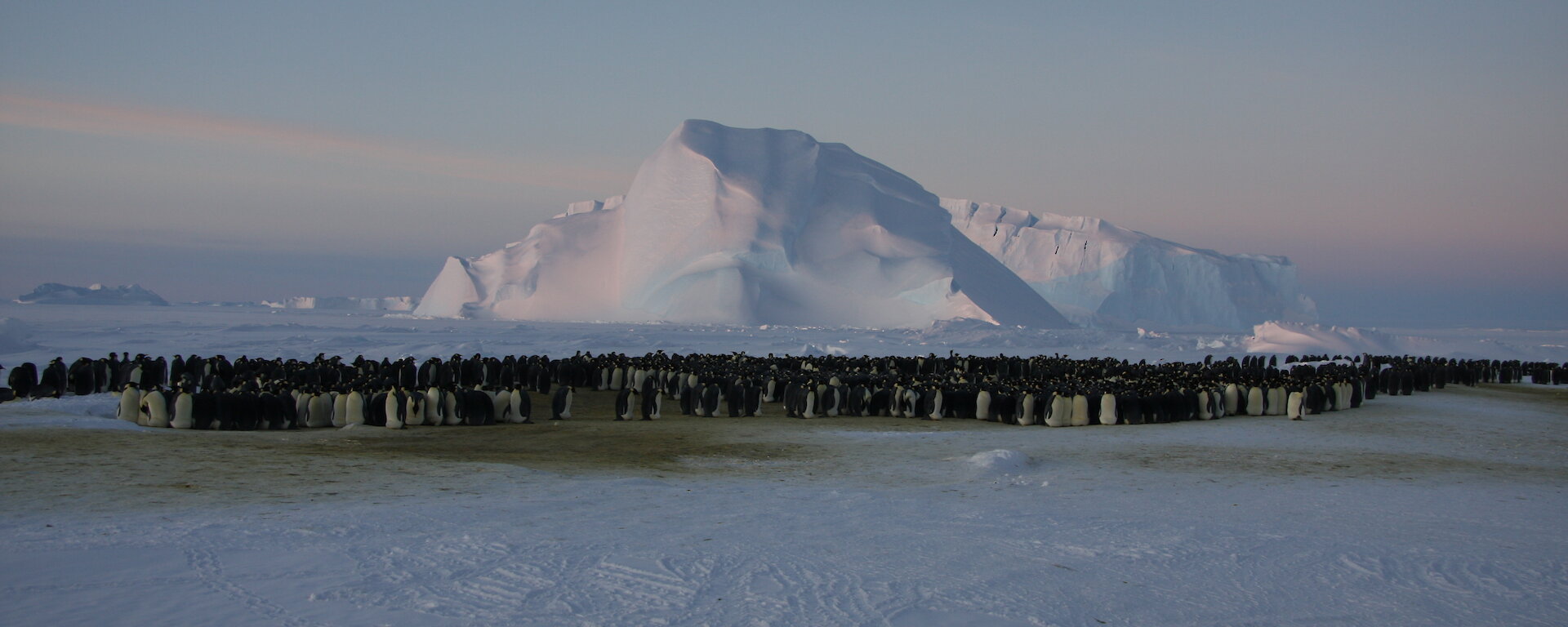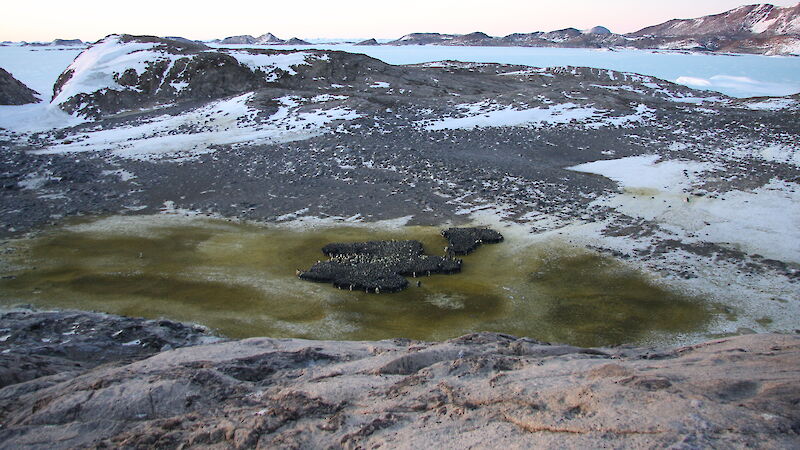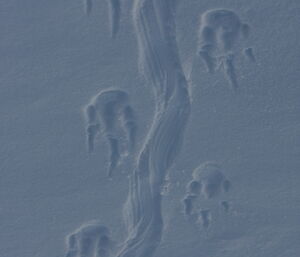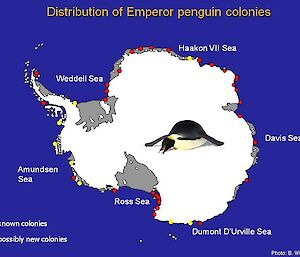In short — very!
This is partly because they decided a long time ago to live in one of Earth’s most inhospitable environments. Emperor penguins breed throughout the Antarctic winter and most of the colonies we know are situated on fast ice (frozen sea attached to the Antarctic continent). Moreover, emperor penguin colonies are often surrounded by massive icebergs! You could be within a few hundred metres of them and never see them.
Why is it difficult to track penguins?
Unlike other birds, emperor penguins do not have fixed nests and they are not territorial. The males take over the egg from their mates, put it on top of their feet and cover with a skin fold of their bellies.
An emperor penguin colony is very dynamic. Throughout the winter and while they incubate their eggs, the penguins move around quite a lot. During the winter storms the penguins huddle, but when the worst weather is over the colony spreads out and shifts location. The huddles reform during the next blizzard.
One way to spot a colony is to look for what they leave behind. Over a few months, the penguins — depending on the size of the colony — can cover an area of several square kilometres with guano! Thankfully today’s satellites have a high enough resolution to be able to see these patches of penguin poo.
Technology assisting discovery
Researchers from the UK, USA and Australia used satellite images to estimate the size of the global population of emperor penguins (Fretwell et al. 2012). This is the first time that such work has been attempted. Many of the now known 46 colonies have either never been visited by people or have not been visited for a very long time. Using images from space makes these colonies more accessible. A few seasons prior to this work, scientists visited some emperor penguin colonies and conducted ground counts of the penguins. In a process call 'ground truthing'. These numbers were used to calibrate the satellite images — the numbers from the ground counts, which are quite accurate, were compared to counts made of the satellite images and compared. Overall, this process worked well and we now think that are about 595,000 adult emperor penguins in Antarctica.
People and penguins
For people, many colonies are very difficult to reach. In the Australian sector of Antarctica, we are lucky to have two emperor penguin colonies relatively close to one of our Antarctic bases, Mawson research station.
The colony at Auster has about 12,000 breeding pairs while there are about 3,000 breeding pairs at Taylor Glacier.
Taylor Glacier is the only colony known to occur entirely on land. A second one, at the Dion Islands, at the Antarctic Peninsula has probably ceased to exist. At a number of other colonies where small islands are near their breeding area, emperor penguins often climb ashore in early summer.
Taylor Glacier is an Antarctic Specially Protected Area (ASPA) and special permits are required to enter the area.





